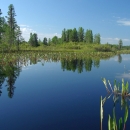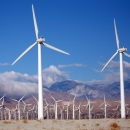What We Do
The U.S. Fish and Wildlife Service (Service) plays a vital role in conserving America’s natural resources by engaging public and private partners in conservation planning and delivery, and in the review of major development proposals. We work collaboratively with other federal agencies, industries, stakeholders, as well as state and local governments, on development projects that accommodate our country’s infrastructure needs, and preserve our nation’s biological, terrestrial, and aquatic natural resources.
Today, there are 250 dedicated biologists in nearly 100 field offices across the country who work on the most pressing issues affecting our fish and wildlife. Our biologists provide technical information, analyze fish and wildlife impacts, serve as members of planning teams and recommend measures to benefit fish and wildlife resources across the landscape.
We recommend early consultation by project proponents and agencies to identify and recommend ways to avoid potential resource conflicts. We also provide technical assistance on how to minimize unavoidable impacts to wildlife and their habitats through appropriate project siting, design, construction, and operation.
Service biologists also provide information about species that may be affected by proposed development, sensitive or rare habitat in the area and sampling and monitoring protocols. If necessary, our biologists help develop compensatory mitigation plans and strategies.
Our goal is to implement innovative solutions to meet development needs, while maintaining ecosystem integrity and protecting fish and wildlife habitat.




